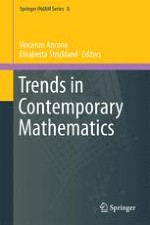2014 | OriginalPaper | Chapter
12. Unlikely Intersections and Pell’s Equations in Polynomials
Author : Umberto Zannier
Published in: Trends in Contemporary Mathematics
Publisher: Springer International Publishing
Activate our intelligent search to find suitable subject content or patents.
Select sections of text to find matching patents with Artificial Intelligence. powered by
Select sections of text to find additional relevant content using AI-assisted search. powered by
